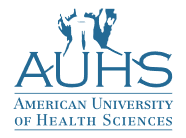By: Jonathan Sheng, PhD
Assistant Professor, Department of Pharmaceutical Sciences, School of Pharmacy
 The recent COVID-19 event has posed great challenges to both university professors and students, as almost all teaching/learning activities are moved from traditional classrooms to online platforms. Consequently, many course instructors have quickly made changes on their originally planned teaching strategies and materials to embrace the changing teaching environment in order to maintain their teaching effectiveness and efficiency, while students also promptly and accordingly adjusted their learning strategies and methods to adapt the changing learning environment in order to overcome the resulting academic difficulties.
The recent COVID-19 event has posed great challenges to both university professors and students, as almost all teaching/learning activities are moved from traditional classrooms to online platforms. Consequently, many course instructors have quickly made changes on their originally planned teaching strategies and materials to embrace the changing teaching environment in order to maintain their teaching effectiveness and efficiency, while students also promptly and accordingly adjusted their learning strategies and methods to adapt the changing learning environment in order to overcome the resulting academic difficulties.
There are advantages and disadvantages of teaching/learning on-line compared to that in traditional classrooms. The main advantages of on-line teaching/learning are: (1). There are no geographic restrictions. Instructors can teach online courses from London or Tokyo and students can take on-line classes in North Carolina or Texas. (2). On-line classes are more cost-effective. For example, during the past few weeks of social distancing implementation, both students and faculty have saved money on the cost of commuting to campus and family caring as a result of working from home. Meanwhile, the working environment on campus has also become much more comfortable with just 5-6 remaining faculty members sharing an entire office building.
The main disadvantages of online teaching/learning are that students are unable to engage in hands-on learning activities and unable to participate in group-learning activities in person. Learning is a social activity and the in-person interactions between students and instructors or among fellow classmates are indispensable. It is often better for students to learn through hands-on experience rather than by being lectured remotely.
The learning styles of students are diverse. There are verbal learners who benefit from textbook reading or being lectured by instructors with visual or aural aids, while there are also tactile or kinesthetic learners who prefer to learn new materials in a lab setting where they can gain physical hands-on experiences. Some students (social learners) prefer to study by group, while others (solitary learners) prefer to study alone.
Previously Kolb and his coauthor categorized all learning styles into four distinct types: accommodating, assimilating, converging, and diverging. Through their years of empirical studies, these four learning style types have been further refined into a nine-style typology: experiencing, reflecting, thinking, acting, imagining, analyzing, deciding, initiating, and balancing.
Because of the diversity of student learning styles, one teaching strategy that faculty may consider is to shift their teaching paradigm from traditional one-size-fits-all teaching approaches to more adaptive and personalized ones. The latter ones fit better to those institutions with low student-to-faculty ratios or smaller classes.
At the American University of Health Sciences, students enjoy a decent student-faculty ratio and a relatively small class size of fewer than 30 enrolled students per class, both in traditional classrooms and at online teaching platforms. With the current social distancing measures, course instructors should think creatively and be willing to try new adaptive teaching approaches. For example, virtual simulations may replicate physical demonstrations in a social distancing environment.
The American University of Health Sciences School of Pharmacy (AUHS-SOP) is a newly established Doctor of Pharmacy program. Its inaugural class has already completed its first year (P1) course work and started its experiencing phase of training. Students at AUHS-SOP have put their efforts into adapting the virtual learning environment resulting from the social distancing implementation. They have not only taken all their courses online but also participated in virtual Interprofessional Education (IPE) simulation training events along with the medical and nursing students and other health-care professionals at Charles R. Drew University of Medicine and Science. The virtual IPE simulation training has provided the participating students with opportunities to bridge their first-year course work to experiential learning.
We all hope the current social distancing measures can be ended soon. But until then our strategies and methods ought to be adjusted accordingly in order to adapt the online classroom only teaching/learning environment.
Reference
Alice Y. Kolb & David A. Kolb. The Kolb Learning Style Inventory 4.0-A Comprehensive Guide to the Theory, Psychometrics, Research on Validity and Educational Applications. Experience Based Learning Systems, Inc. 2013.
About American University of Health Sciences
AUHS is a Christian based, minority-serving university, which educates students for careers in the healthcare professions. AUHS emphasizes the values of faith in God, love of humankind, and belief that all people have a right to healthcare and deserve a good quality of life based on the wellness of body, mind, and spirit. The university celebrates diversity and reaches out to groups currently underrepresented in healthcare and research. AUHS provides the undergraduate and graduate curriculum, hands-on practical training, and supportive environment required to create competent and compassionate healthcare professionals.
American University of Health Sciences is accredited by the WASC Senior College and University Commission (WSCUC), 985 Atlantic Avenue, Suite 100, Alameda, CA 94501, 510.748.9001.
Connect with our social networks
AUHS Facebook
AUHS Instagram
AUHS Twitter
